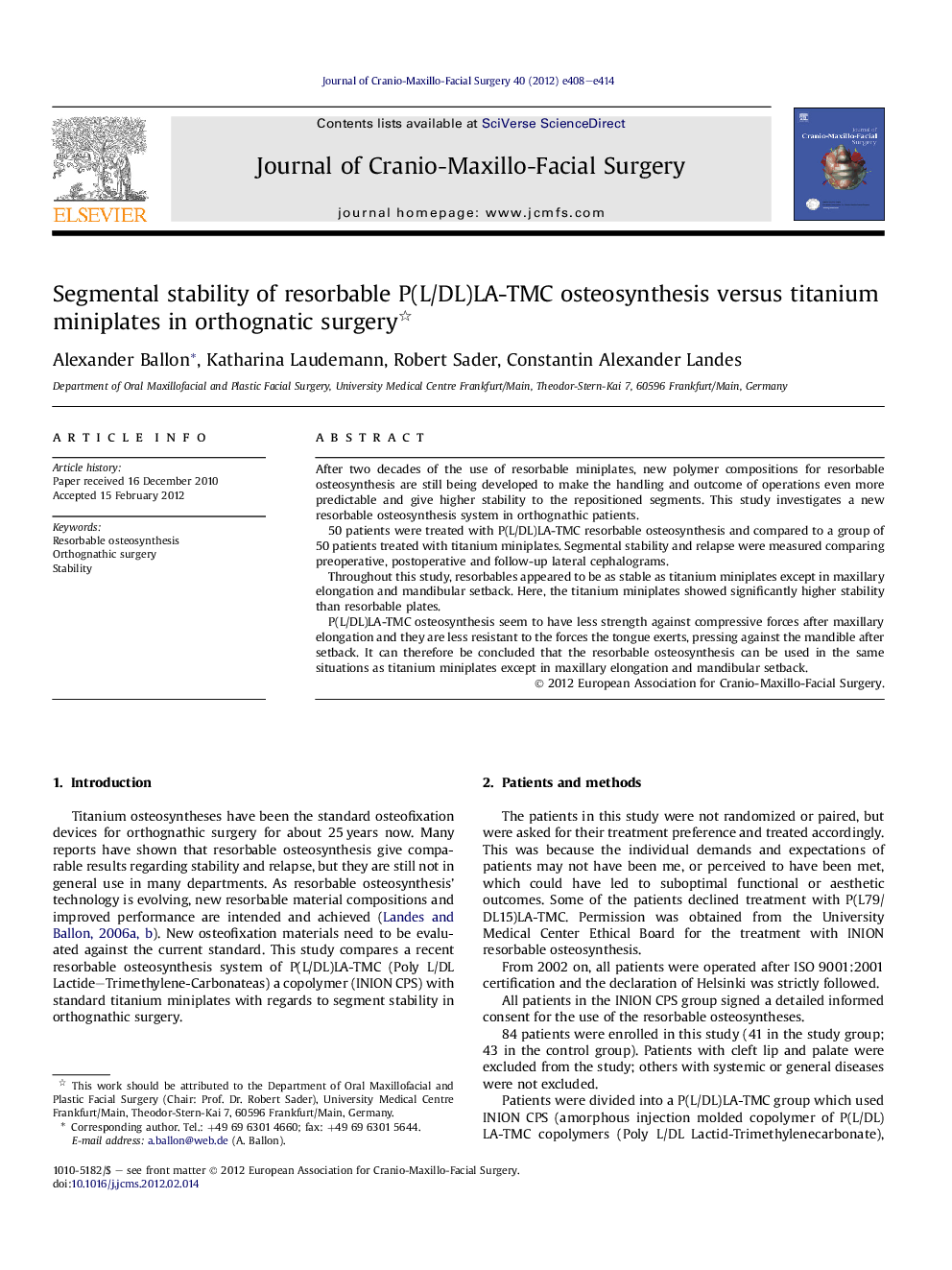| Article ID | Journal | Published Year | Pages | File Type |
|---|---|---|---|---|
| 3143425 | Journal of Cranio-Maxillofacial Surgery | 2012 | 7 Pages |
After two decades of the use of resorbable miniplates, new polymer compositions for resorbable osteosynthesis are still being developed to make the handling and outcome of operations even more predictable and give higher stability to the repositioned segments. This study investigates a new resorbable osteosynthesis system in orthognathic patients.50 patients were treated with P(L/DL)LA-TMC resorbable osteosynthesis and compared to a group of 50 patients treated with titanium miniplates. Segmental stability and relapse were measured comparing preoperative, postoperative and follow-up lateral cephalograms.Throughout this study, resorbables appeared to be as stable as titanium miniplates except in maxillary elongation and mandibular setback. Here, the titanium miniplates showed significantly higher stability than resorbable plates.P(L/DL)LA-TMC osteosynthesis seem to have less strength against compressive forces after maxillary elongation and they are less resistant to the forces the tongue exerts, pressing against the mandible after setback. It can therefore be concluded that the resorbable osteosynthesis can be used in the same situations as titanium miniplates except in maxillary elongation and mandibular setback.
